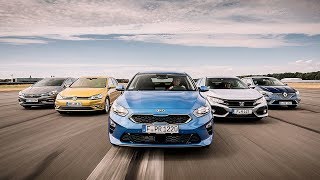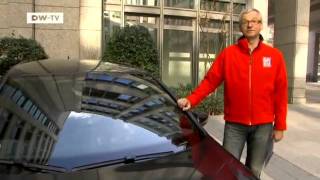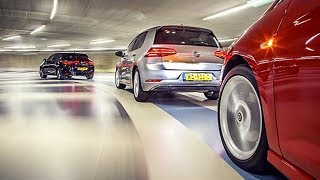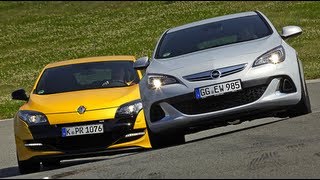Tuesday, 23 December, 2025г.
















Где искать: по сайтам Запорожской области, статьи, видео ролики
пример: покупка автомобиля в Запорожье
Ford Focus vs Opel Astra vs Kia Ceed vs Renault Megane
Ford Focus vs Opel Astra vs Kia Ceed vs Renault Megane
The all-new Focus offers a tailored spectrum of choice, with differentiating executions for #Ford #Focus Vignale, ST-Line, Active and Titanium reflecting the customers' specific preferences and needs. Identifiers include:
The Ford Focus ST-Line's more aggressively styled rear diffuser and larger functional roof-spoiler; more open front apertures designed to enhance performance and reveal the engine components behind; and bold signature ST-Line lower wing elements directing air to the air-curtain inlets
Ford's advanced new turbocharged EcoBlue diesel engines are designed to deliver higher power, more torque at low rpm, and enhanced fuel-efficiency and refinement for higher-mileage drivers. The new 1.5-litre EcoBlue is offered with 95 PS and 120 PS both delivering 300 Nm of torque, and with CO2 emissions from an anticipated 91 g/km for the five-door model. The 2.0 litre EcoBlue engine delivers 150 PS, 370 Nm of torque, and CO2 emissions from an anticipated 112 g/km for the five-door model.
Thanks to excellent aerodynamics as well as highly efficient new engines and transmissions, the new generation #Opel #Astra sets standards for efficiency and low emissions. Compared with the previous model, CO2 has been cut by up to 19 per cent, putting the Astra at the top of the compact class. With its lightweight design (200kg lighter than the predecessor) and top technologies from higher classes, the Astra set benchmarks. Opel continues to pursue this strategy with ultra-modern new generations of highly efficient and lightweight petrol and diesel engines. The 1.2-1.5-litre three-cylinder power units produce 77kW (105hp) to 107kW (145hp), making both the Opel Astra five-door and Sports Tourer real fuel-saving and CO2 champions.
The compact, three-cylinder, turbo petrol units are available with 1.2 and 1.4-litre displacements. With power outputs extending from 81kW (110hp) to 107kW (145hp) and maximum torque from 195 to 236 Newton metres, they achieve an excellent balance between performance and efficiency. The Opel Astra 1.2 is combined with a smooth-shifting six-speed manual gearbox while the Astra 1.4 is available exclusively with a new seven-speed continuously variable transmission (CVT).
The #Kia #Ceed range has been designed at the brand's European design centre in Frankfurt, Germany, under the direction of Gregory Guillaume, European Head of Design, and Peter Schreyer, President of Design and Chief Design Officer.
Lower, wider, and with a longer rear overhang than the car it replaces, the Ceed's cab-rearward silhouette exhibits a more mature sense of athleticism. Straight lines replace the rounded-off edges of its predecessor, evolving the front of the car with a wider 'tiger-nose' grille and lower air intake, and precise, linear shapes framing its 'face'. A greater sense of maturity and strength is created in its shoulder line, which now runs along a more horizontal plane.
A new 'Kappa' 1.4-litre T-GDi power unit replaces the earlier 1.6-litre GDI engine and produces 140ps, 4 per cent more than its predecessor despite its lower displacement. The engine's turbocharger ensures a wider torque band than the earlier 1.6-litre engine, making it more responsive in a wider range of driving conditions - while also reducing emissions. 242 Nm torque is available from 1,500 to 3,200 rpm, with combined emissions (on the WLTP cycle converted back to NEDC 2.0) as low as 125 g/km when fitted with the seven-speed dual-clutch transmission. Manual models emit 130 g/km, or 128 g/km with the ECO Pack.
The new #Megane is based on #Renault's Common Module Family (CMF) vehicle architecture, which makes it possible to offer high-tech features normally available only in cars from higher segments. A number are segment firsts, including a full colour head-up display, a 7-inch colour Thin Film Transistor (TFT) instrument display, a portrait-format 8.7-inch R-Link 2 touchscreen and 4Control four-wheel steering for the GT.
The new Megane's dynamic stance is founded on well-balanced proportions. It is 64mm longer (4,359mm) and 25mm lower (1,447mm) than the third-generation Megane, and has a 28mm longer wheelbase (2,669mm), which is greater than that of rival models. The front and rear track widths have been widened by 47mm and 39mm respectively to 1,591mm and 1,586mm, while the rear overhang has been shortened compared. Wheel sizes of up to 18 inches will be available.
The new Megane will be available with six highly-efficient engines from launch - three ENERGY dCi diesels delivering 90, 110 or 130hp, and three TCe petrol units with outputs of 100, 130 or 205hp. The EDC dual-clutch automatic transmission will be offered with the dCi 110 (six-speed) and the TCe 130 (seven-speed) engines. The seven-speed EDC is standard with the TCe 205 unit in the GT.
Inspiration: Description: https://www.youtube.com/c/NCMEpicMusic Composed By Ender Güney
Теги:
ford focus opel astra kia ceed renault megane ford focus vs opel astra ford focus vs kia ceed ford focus vs renault megane opel astra vs kia ceed opel astra vs renaultt megane kia ceed vs renault megane
Похожие видео
Мой аккаунт


 У вашего броузера проблема в совместимости с HTML5
У вашего броузера проблема в совместимости с HTML5


